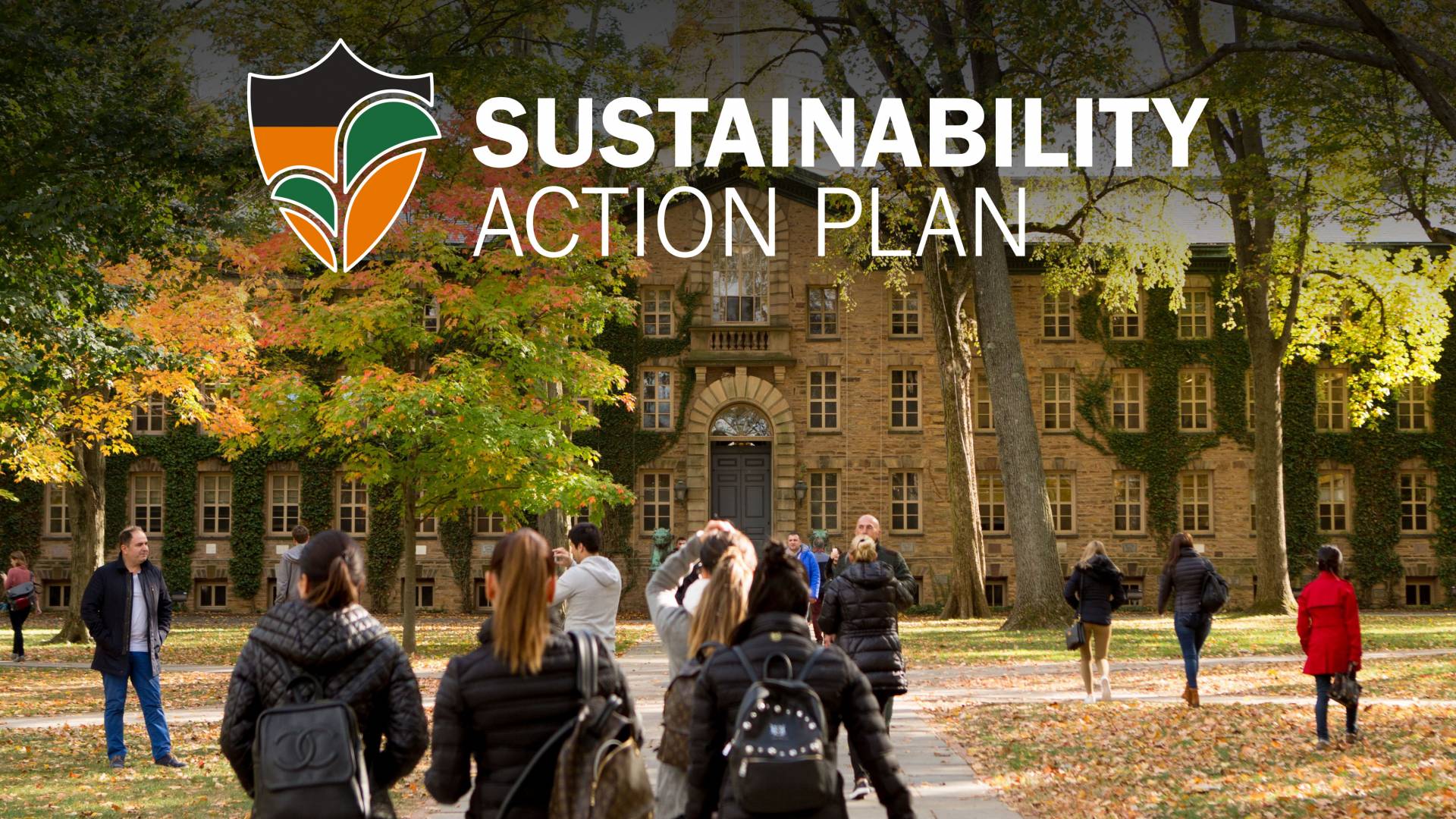Princeton aims to engage the entire University community in creating a more sustainable campus and world through its new Sustainability Action Plan. The plan builds on Princeton University’s significant progress during the last 10 years in reducing greenhouse gas emissions, saving energy and implementing campuswide sustainable practices.
Princeton University’s new Sustainability Action Plan sets bold targets to further reduce greenhouse gas emissions and outlines innovative strategies to engage all faculty, staff and students in creating a sustainable campus and future. Princeton will aim to achieve net zero greenhouse gas emissions by 2046, which is the University’s 300th anniversary.
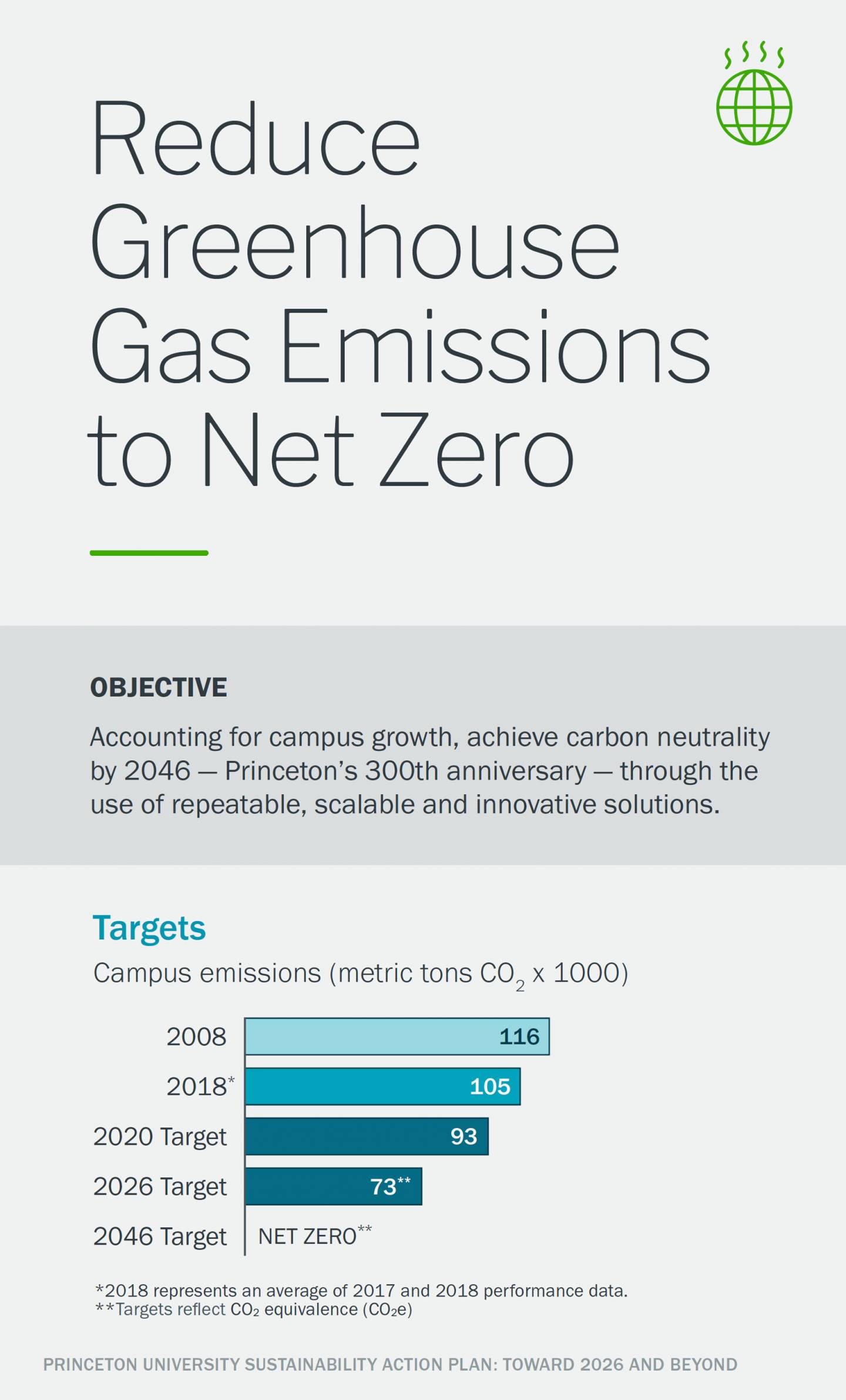
Princeton will aim to achieve net zero greenhouse gas emissions by 2046, with interim reduction targets along the way. The University’s pathway to carbon neutrality relies on both known and unknown strategies at this time, spanning new on-site energy infrastructure, the potential purchase of green electricity generated off-site, and changes in everyday behaviors across campus.
The plan builds on the University’s significant progress during the last 10 years in reducing greenhouse gas emissions, designing efficient buildings, encouraging alternatives to single-occupancy vehicles, and adopting award-winning practices in sustainable dining, construction and other University operations. All of these actions have helped cultivate an ethos of sustainability on campus.
“Our global environment faces challenges of unprecedented scope and complexity. Princeton can play a leadership role not only by developing innovative solutions through teaching and research, but also by establishing best practices in our campus operations and community behaviors that serve as models for the world,” President Christopher L. Eisgruber said. “This plan sets out ambitious but attainable goals that will guide us toward a more sustainable future.”
Director of Sustainability Shana Weber said the Sustainability Action Plan will further stretch the University’s ambitions and imagination. The plan includes action items that will continue to push Princeton forward in energy, waste and water reduction; alternative modes of transportation; healthy water and habitats; responsible development; and sustainable purchasing.
Princeton hopes to uncover best practices and innovation that could be scaled for the campus, the community and the world.
“This plan is ambitious, with an intent to inform three decades of institutional decision-making and individual-scale action,” Weber said. “At the same time, the plan strives to be honest about clear progress as well as intractable challenges as we grapple and tinker with solutions.”
The goals build on Princeton’s first Sustainability Plan released in 2008. That plan set 10-year objectives to improve environmental stewardship as the campus grew. Princeton is on course to meet its goal of absolute campus carbon emissions reduction to 1990 levels by the year 2020, amidst the addition of nearly 2 million square feet of building space.
Emily Carter, dean of the School of Engineering and Applied Science, said Princeton is an example of how to address climate change through both academic research and administrative leadership.
“Princeton has been quietly leading the way as an exemplar for how to change a large institution's carbon footprint,” said Carter, the Gerhard R. Andlinger Professor in Energy and the Environment and professor of mechanical and aerospace engineering. Carter is also a member of the University’s Sustainability Leadership Group.
Sophomore Christopher Gliwa, a civil and environmental engineering major, said Princeton’s sustainability commitments could serve as a model for other institutions.
“Irrefutable evidence has shown that the longer humanity delays its adoption of sustainable practices, the closer we creep towards Earth's 'tipping point.' That is why the Princeton Sustainability Action Plan is so consequential, on and off campus,” Gliwa said. “By embracing sustainability at the campus level, we not only fulfill our moral obligation to act on the issue of unsustainable practices but we also add to the momentum of the growing movement to promote sustainable practices globally.”

For her senior thesis, Cecilia Shang, Class of 2018, used the campus as a lab by applying behavioral science to influence more sustainable food choices in the dining halls. Campus Dining has been a leader in adopting sustainable dining and local purchasing initiatives.
A sustainability plan for the future
Executive Vice President Treby Williams said sustainable strategies are integral to the University’s growth.
“The power of this Sustainability Action Plan, which aligns with the overall Campus Plan for 2026 and beyond, lies in the strength of strategies supporting these important targets,” Williams said. “The plan also highlights where our paths to progress are less clear and where we will engage the ingenuity of our faculty, staff, students and partners to surface promising approaches. I look forward to working with departments across the institution to foster ideas and implement initiatives that will make this long-term sustainability vision a reality.”
Princeton’s sustainability goals rely on interwoven approaches: Building evidence through academic and operational research projects; collaborating across units and departments; and engaging faculty, staff, students and alumni in various ways to spur action and forge solutions.
“We want people to have the information and the tools to make sustainable choices,” Weber said. “Our success depends on every member of the campus community recognizing and embracing their role in creating a truly sustainable Princeton, in solidarity with so many other organizations around the world.”

Lakeside Graduate Housing meets or exceeds Princeton’s sustainability standards and has achieved LEED Silver Certification. Walking, biking and mass transit are promoted through pathways around the complex, and the complex features a number of sustainable features inside and out. Princeton adopted ambitious sustainable building guidelines for renovation and construction projects in 2008.
The sustainability plan outlines action areas with defined targets, measurements and strategies. The University will aim to:
Reduce campus greenhouse gas emissions to zero by 2046, with interim reduction targets along the way. This will include both direct emissions produced on campus and indirect emissions from electricity purchased by the University, with a focus on eliminating fossil fuel combustion. Princeton aims to reach this goal through a number of ways, including: expanding solar power generation on campus, converting from a natural gas-fueled campus steam system to a heating hot water system; renewing energy-efficiency improvements in existing buildings; and investigating long-term fuel alternatives.
Reduce water usage. The goal is to reverse the rising trend in overall campus water consumption since 2008. The 2046 goal is a 26 percent reduction in annual campus water usage from 2008, irrespective of campus growth.
Expand high-performance storm water management. In 2018, 100 acres on campus met high standards for improved surface water quality and reduced runoff. By 2046, the goal is to more than double that area to 222 acres.
Increase sustainable transportation options. The University hopes to nearly double the percentage of commuters who use alternative modes of transportation rather than single-occupancy vehicles.
Reduce waste and expand sustainable purchasing. Princeton will strive for zero waste through evidence-based behavioral and operational strategies that include reduction, reuse and recycling. While Princeton has modestly decreased its overall campus landfill waste over time, its recycling rates have declined due to behavioral, market and programmatic challenges. Princeton will redouble its efforts to study successful strategies on campus and develop ambitious targets.
Design and develop responsibly. The University will continue its strong integrative design process for construction and renovation projects to meet new sustainability targets and objectives. This will include a focus on how building and landscape design can encourage sustainable behaviors, while making more efficient use of lands and existing buildings.
Cultivate healthy and resilient habitats. Princeton will aim to improve natural ecosystems on campus and make more connections to natural habitat areas around campus, with a particular focus on forests.
Vice President for Facilities KyuJung Whang said the sustainability plan “is the culmination of a long and rigorous process that will serve Princeton well for decades to come.” The plan was developed with input from a number of faculty, staff and student groups, as well as sustainability leaders outside the University.
“It is through these types of thoughtful and deliberate strategies that we are going to accomplish our future sustainability goals,” Whang said.
Professor of psychology and public affairs Elke Weber, co-chair of the Princeton Sustainability Committee, said her research on behavioral decision-making and the environment shows that, for credibility and for impact, parents, teachers, scientists and universities must practice what they preach.
“Princeton’s Sustainable Action Plan is exemplary in converting existing analysis of the environmental impacts of our individual and collective actions into best practice guidelines and goals,” said Elke Weber, who is also the Gerhard R. Andlinger Professor in Energy and the Environment.
Julie Newman, sustainability director at the Massachusetts Institute of Technology, said Princeton has been a leader in developing a comprehensive commitment to sustainability. Newman served on an external sustainability review committee for Princeton.
“Higher education remains uniquely positioned to drive an understanding of and seek solutions for climate change,” Newman said. “Through research and science, universities have a responsibility of engaging the next generation of leaders, teachers and citizens in seeking innovative solutions to climate change. Princeton’s sustainability plan is a fabulous model for other institutions in setting realistic targets and aspirational goals for the future.”
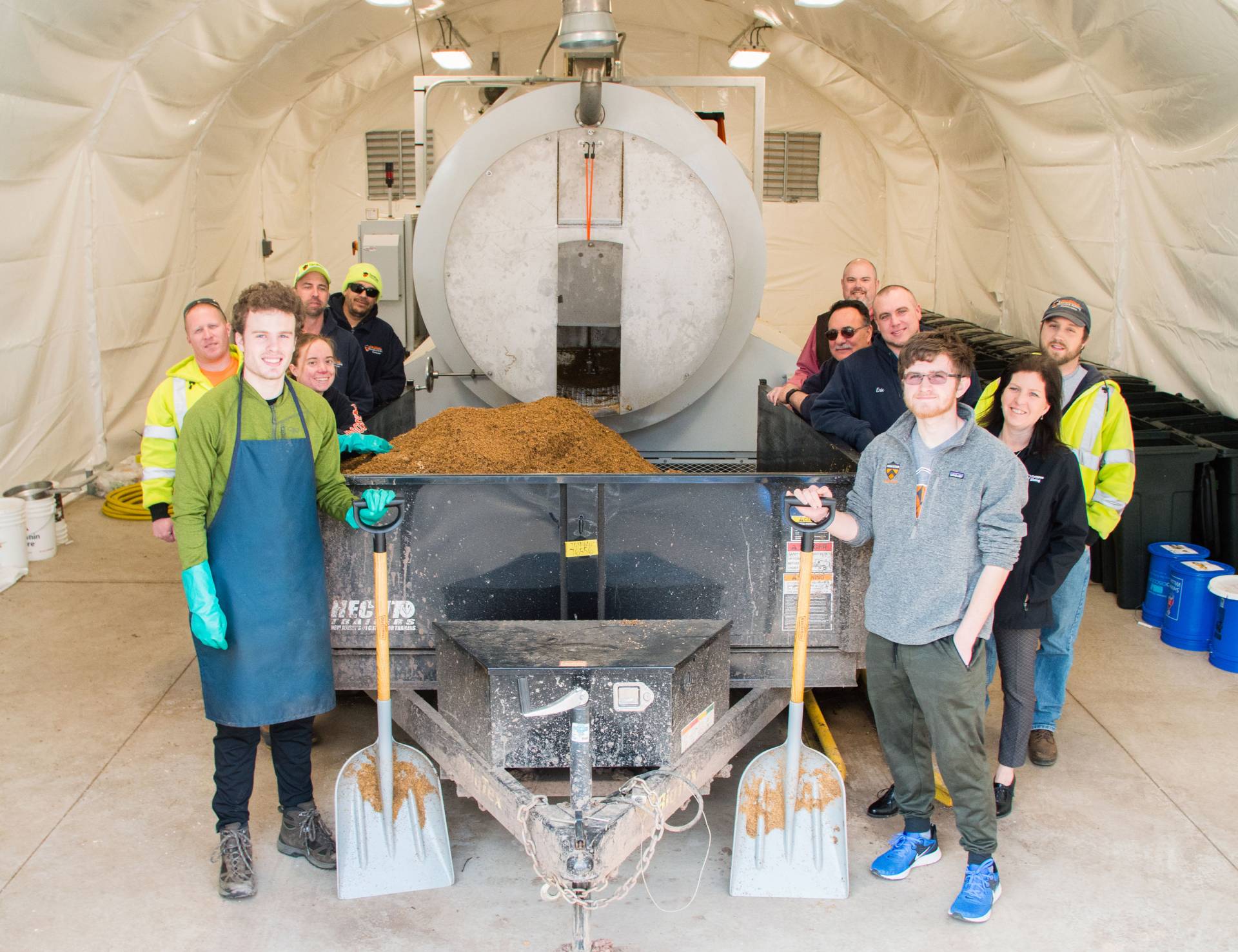
Through a partnership between Facilities and Campus Dining, the S.C.R.A.P. Lab converts food waste into nutrient-rich compost. The S.C.R.A.P. Lab is one of many projects, initiatives and programs that make up the University's Sustainability Plan.
Plan builds on significant sustainability achievements
The new sustainability targets build on the 2008 Sustainability Plan, which was Princeton’s first formal commitment to reduce emissions, improve resource conservation, and advance sustainability education, research and campus engagement. The 2008 plan also introduced the Campus-as-Lab initiative that supports faculty, staff and students to test sustainable strategies.
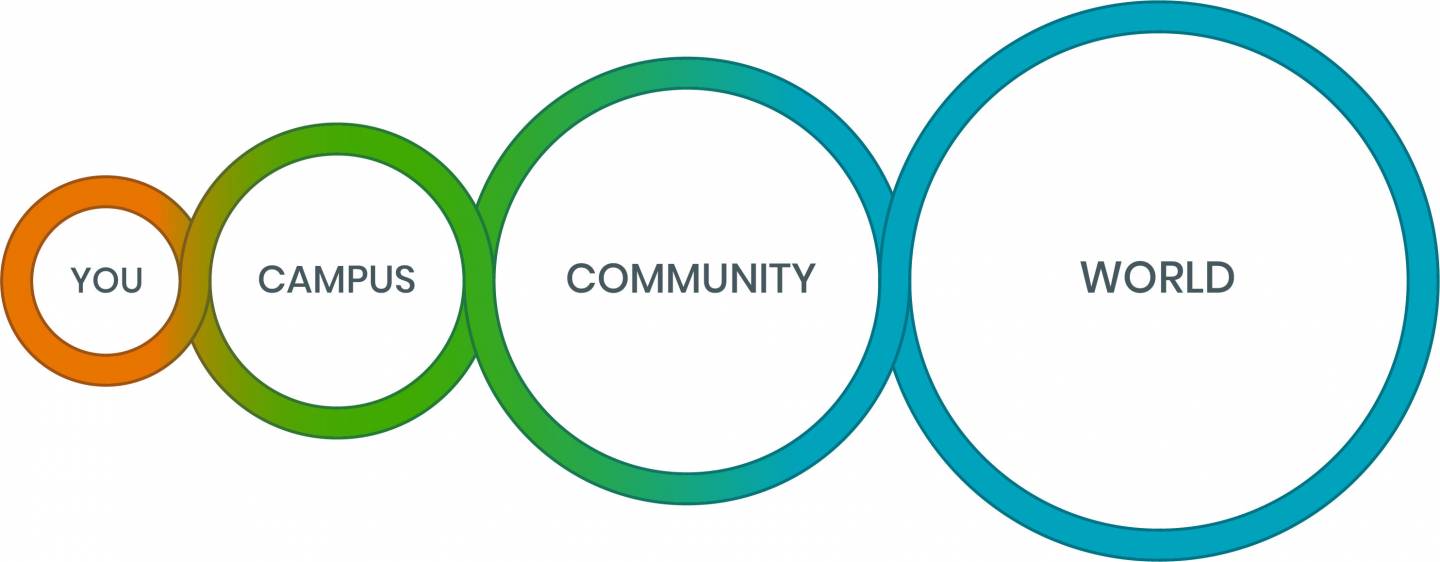
Princeton hopes to uncover best practices and innovation that could be scaled from the individual to the campus, the community and the world. “Princeton can play a leadership role not only by developing innovative solutions through teaching and research, but also by establishing best practices in our campus operations and community behaviors that serve as models for the world,” President Christopher L. Eisgruber said.
"The University set aggressive goals 10 years ago, and we have achieved meaningful results while continuing to grapple with ‘sticky’ challenges by engaging the academic and operational sides of the University and by working with students, faculty, staff and alumni on creative solutions,” Weber said.
Achievements during the past 10 years include:
An absolute reduction of carbon dioxide emissions to 1990 levels without the purchase of market offsets, while adding 2 million square feet of built space. Princeton is close to achieving this goal through widespread energy conservation initiatives, building system and energy infrastructure improvements, and the installation of cleaner energy sources such as the University’s solar field and geo-exchange wells.
Energy cost savings, even as the University has opened new buildings across campus.
A reduction in single-occupancy cars driving to campus, with 44% more commuters using sustainable transportation options such as buses, trains, bikes and carpools. Since a new “Revise Your Ride” campaign for employees went into effect last year, Princeton has saved almost 10,000 gallons of gas and prevented the release of nearly 1,200 metric tons of carbon emissions.
An 8% decline in overall campus waste volume and a 23% recycling rate across campus. Princeton is now focused on studying and implementing effective ways to encourage much greater waste reduction and recycling on campus.
An emphasis on sustainable and local purchasing and products. For example, 44% of food purchased by Campus Dining comes from local sources, up from 27% in 2008.
Newman said the sustainable data and research collected by Princeton over the last 10 years — and the data that will be collected going forward — is an amazing resource.
“We will continue to look to Princeton as it aims to meet its sustainability targets for 2020, 2026 and 2046,” she said.
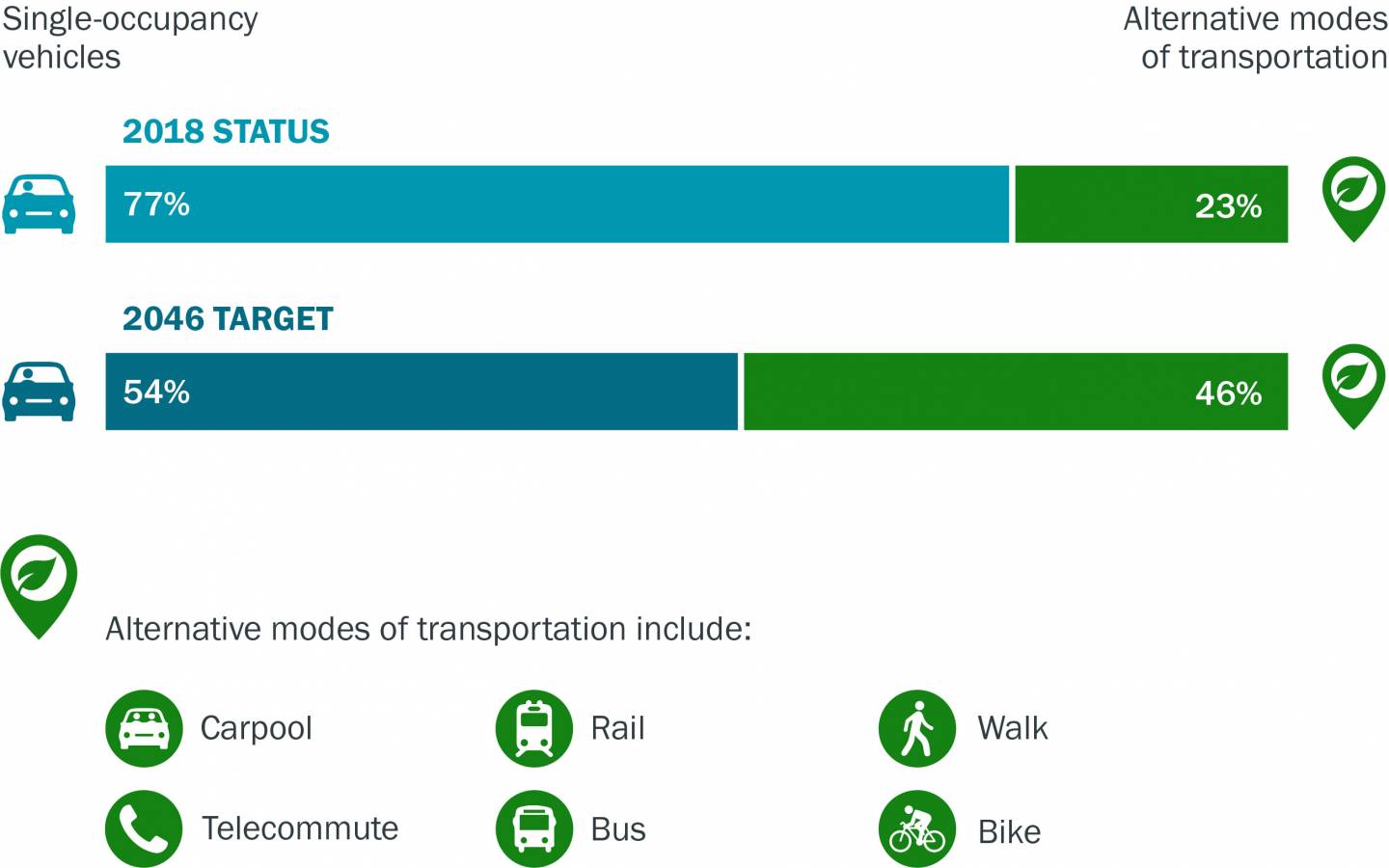
By 2046, the University hopes to nearly double the percentage of commuters who use alternative modes of transportation rather than single-occupancy vehicles. Since a new “Revise Your Ride” campaign for employees went into effect last year, Princeton has saved almost 10,000 gallons of gas and prevented the release of nearly 1,200 metric tons of carbon emissions.
Katja Luxem, a graduate student in geosciences affiliated with the Princeton Environmental Institute, said support from the campus community is key to achieving the University’s sustainability targets.
“It has been exciting to see how much progress can be made when we share this common objective, and how many ideas have come out of the sustainability-focused conversations leading up to the plan,” Luxem said. “Looking forward, I hope that the launch of the Sustainability Action Plan helps make sustainability a key priority for the university and a more widely acknowledged value in our community.”
Earth Day and beyond
The release of the Sustainability Action Plan coincides with Earth Day. The Office of Sustainability is hosting a number of events this month that showcase some of the sustainable projects and operations highlighted in the plan.
Weber said the plan’s release is the start of a long-term effort to cultivate an even greater ethos of sustainability on campus and beyond, with many opportunities to shape direction and act along the way.
“Princeton is not just a place, it’s an experience. One that has ripple effects throughout each campus community member’s life and work, and across all our partnerships and collaborations around the world,” Weber said. “We hope the campus community will use the plan as a framework to guide individual and departmental priorities to help achieve the University’s sustainability objectives. And that everyone, from department managers to incoming students to alumni returning for events, will feel supported in taking everyday actions that make Princeton a place that we can all feel even more proud of.”

Bedford Field features an optimal playing surface for field hockey with specialized water-conserving artificial turf. The field also features a water cannon system that can produce the required conditions in only six minutes using 2,000 gallons of water, compared to the old system that used as much as 12,000 gallons with each application.
